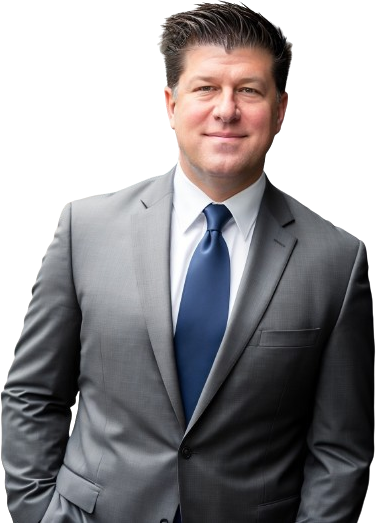
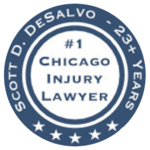

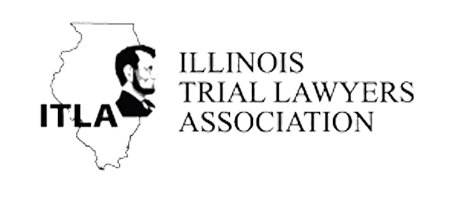
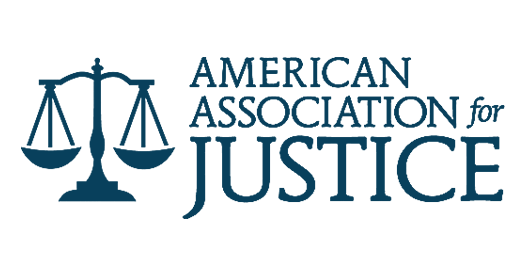
When I was nine years old, my father—a Teamster truck driver—was catastrophically injured at work. He was still a young man. But that injury took everything from him. The injuries to his neck, back and spine were permanent and they changed his life forever. He was never the same.
After being hurt, he hired the wrong personal injury law firm to handle his case. They were rude to him, didn't explain things, and did not pursue his third party case—leaving money on the table without explaining it to him. His case went on for 17 years, and it ended in a fee dispute with his old personal injury lawyer wanting more of my father's settlement money.
That's why I became a Chicago construction accident lawyer.
I'll never forget the call I received at 2 AM from a union carpenter named Miguel who had just fallen three stories at a River North high-rise development. His voice was shaking—not from the pain of his shattered pelvis and broken ribs, but from the terror of not knowing how he'd provide for his wife and two young daughters during the months of recovery ahead. Miguel had been supporting his family for 15 years without missing a single mortgage payment. Now, lying in Northwestern Memorial Hospital, he was facing an uncertain future because a general contractor decided that proper fall protection equipment was "too expensive" and would "slow down the project."
That conversation reminds me every day why I do this work. Every day, hardworking people across our city—from Pilsen to Portage Park, from Bronzeville to Beverly—climb scaffolding, operate heavy machinery, and build the skyline that defines Chicago. They deserve to return home safely to their families. When negligence, code violations, or corporate shortcuts rob them of that right, I make it my mission to hold the responsible parties accountable.
If you've been injured on a construction site anywhere in Chicago or throughout Illinois, you're facing one of the most overwhelming situations imaginable. Whether you were working on the Old Post Office renovation downtown, a new residential tower in the West Loop, infrastructure repairs along the Dan Ryan Expressway, or a suburban shopping center development in Oak Brook, construction accidents happen in seconds but create consequences that last a lifetime.
Here's my commitment to you: no money out of pocket, no fee until we win your case, and you can call me 24/7/365—whether it's dawn before your shift starts, midnight after a hospital visit, or a holiday weekend when questions keep you awake. Your focus should be on healing and spending time with your family, not battling insurance adjusters and navigating legal deadlines alone.

Here's what I've learned representing construction workers across Chicago: Many injured workers believe that pain, risk, and injury are simply part of working in the trades. This couldn't be further from the truth.
Under Illinois law and federal OSHA regulations, construction companies, general contractors, subcontractors, and property owners have a legal duty to maintain safe worksites. When they fail in this duty—whether through inadequate fall protection, defective equipment, lack of proper training, or ignoring safety regulations—they can and should be held liable for the injuries they cause.
In Illinois, you have multiple legal avenues for recovering compensation after a construction accident:
Nearly all construction workers in Illinois are covered by their employer's workers' compensation insurance, regardless of who was at fault for the accident. Workers' comp provides coverage for medical treatment, a portion of lost wages (typically two-thirds of your average weekly wage), and permanent disability benefits if your injuries prevent you from returning to your previous work.
But here's the thing: workers' comp benefits are often limited and don't cover pain and suffering or full wage replacement. And insurance companies will deny your benefits unless you get a lawyer involved.
This is where many injured workers don't realize they have additional options—and it's where I can really help you.
If someone other than your direct employer caused or contributed to your accident—such as a general contractor, property owner, equipment manufacturer, subcontractor, or architect—you may have a separate personal injury claim against them. These third-party claims can provide compensation for pain and suffering, full lost wages, loss of future earning capacity, and other damages that workers' comp doesn't cover.
I've seen too many injured workers accept inadequate workers' comp settlements because they didn't know they had the right to pursue additional claims against negligent third parties. That's money their families desperately need—and deserve.
Illinois has unique laws that provide special protections for workers injured while performing structural work on buildings. Under the Illinois Structural Work Act (740 ILCS 140/), contractors and property owners can be held strictly liable—meaning automatically responsible—for injuries occurring during structural work, even without proving negligence.
This powerful law applies to work involving the construction, repair, or demolition of buildings or other structures. It's a game-changer for many construction accident cases, and frankly, a lot of lawyers don't fully understand how to use it effectively. I do.
As your construction accident lawyer in Chicago, I investigate every possible avenue for compensation. Your fight is my fight.
Chicago's construction landscape is diverse—from high-rise developments downtown to residential renovations in Lincoln Park, from massive infrastructure projects like the Jane Byrne Interchange reconstruction to commercial builds in suburban areas. Each type of project presents unique hazards.
Over my years representing injured construction workers throughout Cook County and the surrounding counties, I've handled virtually every type of construction accident case:
Falls remain the leading cause of construction fatalities nationwide and here in Chicago. I've represented workers who fell from:
When contractors fail to provide proper fall protection equipment, inadequate guardrails, insufficient safety training, or ignore OSHA requirements, workers pay the price with spinal cord injuries, traumatic brain injuries, shattered bones, and sometimes their lives.
Being struck by falling tools, materials, or equipment causes devastating injuries. Chicago's vertical construction environment—with its emphasis on high-rise buildings—creates particular risks when materials fall from upper floors. I've represented workers struck by:
Chicago's aging infrastructure and the complexity of modern construction projects create significant electrocution hazards. Workers face risks from:
Electrical injuries often cause severe burns, cardiac problems, neurological damage, and sometimes wrongful death. These cases frequently involve utility companies like ComEd, electrical contractors, and equipment manufacturers as liable parties.
Workers can be caught in or crushed by equipment, collapsing structures, or excavation cave-ins. Common scenarios include:
Trench collapses are particularly deadly and unfortunately common in Chicago given our extensive underground infrastructure work for water mains, sewer systems, and utility installations.
Chicago's skyline is constantly evolving, and tower cranes are a fixture on our construction landscape. Crane accidents can result from:
I've also handled cases involving accidents with forklifts, backhoes, bulldozers, excavators, and other heavy equipment commonly used on Chicago construction sites.
Scaffolding accidents occur when:
Many Chicago construction sites use scaffolding systems that climb building exteriors as construction progresses. These systems require careful engineering and regular inspection—corners that negligent contractors sometimes cut.
Construction workers may be exposed to hazardous materials including:
These exposure cases can result in serious long-term health consequences including respiratory diseases, cancer, and neurological damage.
One of the most challenging aspects of construction accident cases is determining all the parties who may be liable for your injuries. Unlike a simple car accident with two drivers, construction sites typically involve multiple entities—and multiple insurance policies.
This complexity is actually an advantage for injured workers when you have an experienced construction accident attorney who knows how to identify every responsible party and maximize your recovery.
Potentially liable parties in Chicago construction accident cases include:
General Contractors: The general contractor typically has overall responsibility for worksite safety and coordinating subcontractors. Even if you were employed by a subcontractor, the general contractor may be liable for creating or allowing unsafe conditions.
Subcontractors: Specialty trades contractors (electrical, plumbing, HVAC, concrete, etc.) can be liable when their work or negligence contributes to injuries.
Property Owners: Building owners and developers have duties to ensure that contractors maintain safe worksites, especially in premises liability situations.
Equipment Manufacturers: When defective tools, machinery, scaffolding, or safety equipment cause injuries, product liability claims against manufacturers may be appropriate.
Equipment Rental and Leasing Companies: Companies that rent or lease construction equipment may share liability if they provided defective or improperly maintained equipment.
Architects and Engineers: Design professionals can be liable when design defects or inadequate safety planning contribute to accidents.
Utility Companies: ComEd, Peoples Gas, and other utilities may be liable when their negligence regarding power lines or underground utilities causes injuries.
I thoroughly investigate your accident to identify every potential defendant. This investigation includes:
The more parties we can hold accountable, the more insurance coverage becomes available to fully compensate you for your injuries.



Many injured workers underestimate the true value of their construction accident claim. Insurance companies exploit this by making quick, lowball settlement offers before workers understand the full extent of their injuries and future needs.
As your Chicago construction accident lawyer, I ensure you receive compensation that accounts for both your current situation and your long-term needs.
Full compensation for all medical treatment including:
Chicago has world-class medical facilities including Northwestern, Rush, University of Chicago, and Loyola. Quality treatment isn't cheap, and you shouldn't bear these costs when someone else's negligence caused your injuries.
Construction workers often earn good wages, especially union members with benefits. Your claim should include:
I work with economists and vocational experts to accurately calculate lifetime earning losses for catastrophically injured workers.
The physical pain you've endured and will continue to experience deserves compensation. This includes:
Construction accidents often cause significant psychological trauma:
When injuries prevent you from enjoying activities you once loved:
Permanent visible injuries affect your self-esteem and how others perceive you.
Your spouse may have a separate claim for loss of companionship, affection, and intimacy.
In cases involving particularly egregious conduct—such as willfully ignoring known safety hazards or repeatedly violating OSHA regulations—Illinois law allows for punitive damages designed to punish wrongdoers and deter similar conduct in the future.
I've secured substantial settlements and verdicts for Chicago construction workers across all these categories. Your case deserves thorough evaluation by someone who understands its full value.
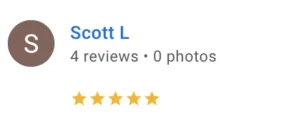
This distinction confuses many injured workers, so let me explain clearly:
You can pursue BOTH simultaneously. I regularly help clients receive workers' comp benefits while also building third-party personal injury cases. The workers' comp carrier may have a lien on any third-party recovery, but even after reimbursing them, you typically end up with significantly more money than workers' comp alone would provide.
Many insurance companies hope you don't understand this distinction. They count on injured workers accepting inadequate workers' comp settlements without realizing they have additional claims worth far more. Don't let this happen to you.
Find Out What YOUR Case Might Be Worth...for free.
Illinois law imposes strict deadlines for filing construction accident claims:
Workers' Compensation: You must provide notice to your employer within 45 days of the accident (though exceptions exist for delayed-onset injuries) and file a claim within 3 years of the injury or within 2 years from the date of your last workers' comp payment.
Personal Injury Lawsuits: The statute of limitations is generally 2 years from the date of injury. Once this deadline passes, you lose your right to sue, no matter how strong your case might be.
Why This Matters: Evidence disappears quickly on construction sites. Equipment gets moved, workers move to new projects, memories fade, and companies begin building their defense immediately. The sooner you contact me, the better I can:
Additionally, insurance adjusters often contact injured workers immediately, hoping to record statements or obtain settlements before workers understand their rights. Having me involved from the beginning protects you from tactics designed to minimize your claim.
Illinois law prohibits retaliation against workers who file workers' compensation claims. If you're fired, demoted, or otherwise punished for seeking benefits, you have additional legal recourse including wrongful termination claims.
Illinois follows a "modified comparative negligence" rule. As long as you're less than 51% at fault, you can still recover damages (reduced by your percentage of fault). However, this only applies to personal injury claims—workers' comp is no-fault.
Yes. Immigration status does not affect your right to workers' compensation benefits or personal injury claims in Illinois. I've successfully represented undocumented workers injured on Chicago construction sites. Your case is confidential and immigration authorities are not involved in the legal process.
Not before speaking with me. Insurance companies make early offers specifically because injured workers don't yet understand the full extent of their injuries or the true value of their claims. These initial offers are almost always inadequate. Once you settle, you cannot reopen your claim later when complications arise.
Illinois law requires virtually all employers to carry workers' comp insurance. If your employer is operating illegally without coverage, you have even more options including suing them directly (the workers' comp immunity doesn't apply), filing claims with the Illinois Workers' Compensation Commission, and pursuing other responsible parties.
Nothing out of pocket. I work on a contingency fee basis, meaning I only get paid if I recover compensation for you. My fee comes from the settlement or verdict—you never receive a bill. This arrangement allows injured workers to access quality legal representation regardless of their financial situation.

Get Your FREE Copy of...
Your complete guide to work injury and Workers Comp to give you everything you need to know if you or a loved one has been hurt at work.
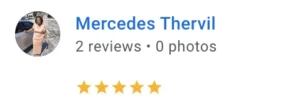
When you're choosing a Chicago construction accident lawyer, you need someone who combines legal expertise with genuine care for injured workers and their families.
I grew up poor, once my father could no longer work. My father had to wait 17 years for his case to end.
So I worked during high school and put myself through college and law school so that what happened to my family NEVER happens to YOU or YOUR FAMILY. And I have dedicated my personal injury law firm to helping normal people like me, my family, and YOU, and YOUR FAMILY, so victims of personal injury do not get worked over by the legal system, rich insurance companies and lawyers who only think of themselves.
In order to get every dollar my clients deserve, whether at settlement or trial, I have spent the last 2 decades of my career studying with the 'best of the best'. I have spent well over $100,000 for advanced settlement and trial training that most other lawyers never even consider doing.
I have flown all over the country (and continue to do so) to study with the top legal minds. I am a graduate of the world-renowned "Gerry Spence Trial Lawyer's College" as well as a graduate of the prestigious "The Edge" program. Not one in 10,000 lawyers has completed the training I have.
And I did it for one reason: so you get the very best, most cutting edge and effective representation possible.
Construction accidents don't happen on a schedule, and neither do questions and concerns. You can reach me any time—early morning before your shift, late at night when pain keeps you awake, or on weekends and holidays. I'm here when you need me.
You're not a case number passed to a paralegal. I personally handle your case and remain accessible throughout the process. People who have been injured in an accident deserve to have their phone calls answered and they deserve to have an injury lawyer who they like, trust and respect.
I know this city—from the neighborhoods where workers live to the hospitals where they receive treatment to the courthouses where justice is sought. This local knowledge matters when building and presenting your case.
You pay nothing unless we win. No retainer fees, no hourly bills, no expense invoices. I invest in your case because I believe in your right to justice.
From my one-of-a-kind, in-house developed automated case management software to my proprietary pre-suit case process, my firm discovers more about your case, earlier. We beat the insurance company to the punch, and that means better results and faster case settlements for all of my injury clients.
I only represent injured people, NEVER Defense or Insurance companies, and I even take the tougher cases other lawyers turn their noses up at. That's because I have not just dedicated my injury law firm, but my very life, to representing injured people who otherwise would be acting without the information and help they need after being hurt at work, in a car crash, or no matter how they suffered an injury.
Your fight is my fight. You can count on my team to help you in your time of need.
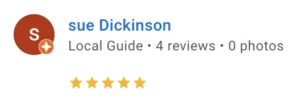
Right now, while you're reading this, insurance companies are already working to minimize their liability for your accident. Defense lawyers are being hired, witnesses are being interviewed, and strategies are being developed to pay you as little as possible. You need someone working just as hard for YOUR interests.
Don't wait another day to protect your rights and your family's financial future.
Here's how it goes:
Sound good?
The consultation is completely confidential and free. You're under no obligation to hire me, and if we don't take your case, I'll explain why and direct you to resources that might help.
If you're too injured to come to my office, I'll come to you. I meet clients at their homes, in hospitals, or anywhere in the Chicago area that's convenient. Your injuries shouldn't prevent you from accessing legal help.
Call me right now at 312-500-4500. I'm available 24 hours a day, 7 days a week, 365 days a year.
Remember: No recovery = no fee. You have everything to gain and nothing to lose by calling.
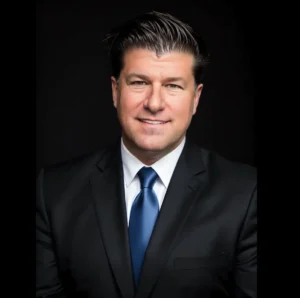
I represent injured workers from every neighborhood in Chicago and throughout the surrounding areas including:
Chicago Neighborhoods: River North, Loop, West Loop, Lincoln Park, Lakeview, Wicker Park, Pilsen, Bridgeport, Beverly, Mount Greenwood, Edison Park, Portage Park, Logan Square, Humboldt Park, Austin, South Shore, Hyde Park, Bronzeville, Streeterville, Gold Coast, Old Town, and all other areas.
Suburban Areas: Oak Brook, Oak Park, Berwyn, Cicero, Evanston, Skokie, Des Plaines, Arlington Heights, Schaumburg, Naperville, Aurora, Joliet, Oak Lawn, Orland Park, Tinley Park, and throughout Cook, DuPage, Lake, Will, Kane, and McHenry Counties.
Statewide Representation: I also represent construction workers injured anywhere in Illinois, from Rockford to Springfield to Peoria to the Metro East area.
No matter where your accident occurred or where you live, if you were injured on a construction site, I want to hear from you.
Hiring Scott was one of the best moves I have made in my life. Scott is a down to earth person and attorney. Scott is a 5 star first class act who really knows his stuff. The Judge said his presentation was one of if not the best he had ever seen. Take my advice, hire Scott I’m sure you’ll be 200% satisfied I was.

Scott not only cares about the case, but he truly cares about his clients and that makes him the best lawyer I have ever met and hired! He won my case! He is thorough in everything he does. I highly recommend Scott, and will always refer him to family and friends.

I hired Scott DeSalvo upon a friend’s recommendation. His office kept me informed of developments as they happened, and I felt the settlement reached was fair considering my injuries. I would highly recommend Scott DeSalvo to represent your personal injury case.

"Hiring Scott was one of the best moves I have made in my life. Scott is a down to earth person and attorney. Scott is a 5 star first class act who really knows his stuff. The Judge said his presentation was one of if not the best he had ever seen. Take my advice, hire Scott I'm sure you'll be 200% satisfied I was."
— Richard Lange, Cab Driver, Fall Down
"Scott not only cares about the case, but he truly cares about his clients and that makes him the best lawyer I have ever met and hired! He won my case! He is thorough in everything he does. I highly recommend Scott, and will always refer him to family and friends."
— Geannine Rowe, Hair Stylist, Car Crash
"I hired Scott DeSalvo upon a friend's recommendation. His office kept me informed of developments as they happened, and I felt the settlement reached was fair considering my injuries. I would highly recommend Scott DeSalvo to represent your personal injury case."
— Lisa Hibbard, Car Versus Pedestrian
Don't wait. Your family's financial future depends on the decisions you make today.
Call now: 312-500-4500 - Available 24/7/365
>> Go To Main Topic Page

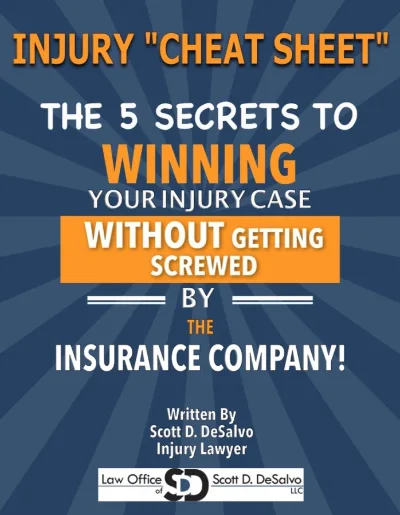

Scott DeSalvo founded DeSalvo Law to help injured people throughout Chicago and surrounding suburbs. Licensed to practice law in Illinois since 1998, IARDC #6244452, Scott has represented over 3,000 clients in personal injury, workers compensation, and accident cases.
No Fee Unless You Win | Free Consultation | 24/7 Availability Call or Text: (312) 500-4500
>>Read More
Main Office:
1000 Jorie Blvd Ste 204
Oak Brook, IL 60523
New Cases: 312-500-4500
Office: 312-895-0545
Fax: 866-629-1817
service@desalvolaw.com
Chicago and Other Suburban Offices
By Appointment Only